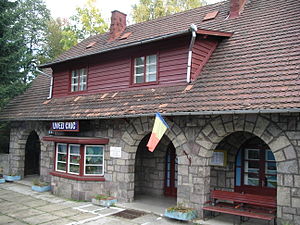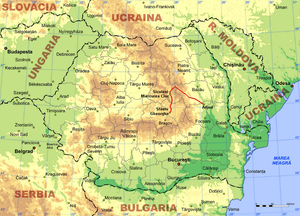Sfântu Gheorghe – Siculeni – Adjud railway line
| Sfântu Gheorghe – Siculeni – Adjud | |||||||||||||||||||||||||||||||||||||||||||||||||||||||||||||||||||||||||||||||||||||||||||||||||||||||||||||||||||||||||||||||||||||||||||||||||||||||||||||||||||||||||||||||||||||||||||||||||||||||||||||||||||||||||||||||||||||||||||||||||||||||||||||||||||||||||||||||||||||||||||||||||||||||||
|---|---|---|---|---|---|---|---|---|---|---|---|---|---|---|---|---|---|---|---|---|---|---|---|---|---|---|---|---|---|---|---|---|---|---|---|---|---|---|---|---|---|---|---|---|---|---|---|---|---|---|---|---|---|---|---|---|---|---|---|---|---|---|---|---|---|---|---|---|---|---|---|---|---|---|---|---|---|---|---|---|---|---|---|---|---|---|---|---|---|---|---|---|---|---|---|---|---|---|---|---|---|---|---|---|---|---|---|---|---|---|---|---|---|---|---|---|---|---|---|---|---|---|---|---|---|---|---|---|---|---|---|---|---|---|---|---|---|---|---|---|---|---|---|---|---|---|---|---|---|---|---|---|---|---|---|---|---|---|---|---|---|---|---|---|---|---|---|---|---|---|---|---|---|---|---|---|---|---|---|---|---|---|---|---|---|---|---|---|---|---|---|---|---|---|---|---|---|---|---|---|---|---|---|---|---|---|---|---|---|---|---|---|---|---|---|---|---|---|---|---|---|---|---|---|---|---|---|---|---|---|---|---|---|---|---|---|---|---|---|---|---|---|---|---|---|---|---|---|---|---|---|---|---|---|---|---|---|---|---|---|---|---|---|---|---|---|---|---|---|---|---|---|---|---|---|---|---|---|---|---|---|---|---|---|---|---|---|---|---|---|---|---|---|---|---|---|---|
|
Livezi Ciuc train station
| |||||||||||||||||||||||||||||||||||||||||||||||||||||||||||||||||||||||||||||||||||||||||||||||||||||||||||||||||||||||||||||||||||||||||||||||||||||||||||||||||||||||||||||||||||||||||||||||||||||||||||||||||||||||||||||||||||||||||||||||||||||||||||||||||||||||||||||||||||||||||||||||||||||||||
| Course book route (CFR) : | 400/501 | ||||||||||||||||||||||||||||||||||||||||||||||||||||||||||||||||||||||||||||||||||||||||||||||||||||||||||||||||||||||||||||||||||||||||||||||||||||||||||||||||||||||||||||||||||||||||||||||||||||||||||||||||||||||||||||||||||||||||||||||||||||||||||||||||||||||||||||||||||||||||||||||||||||||||
| Route length: | 220 km | ||||||||||||||||||||||||||||||||||||||||||||||||||||||||||||||||||||||||||||||||||||||||||||||||||||||||||||||||||||||||||||||||||||||||||||||||||||||||||||||||||||||||||||||||||||||||||||||||||||||||||||||||||||||||||||||||||||||||||||||||||||||||||||||||||||||||||||||||||||||||||||||||||||||||
| Gauge : | 1435 mm ( standard gauge ) | ||||||||||||||||||||||||||||||||||||||||||||||||||||||||||||||||||||||||||||||||||||||||||||||||||||||||||||||||||||||||||||||||||||||||||||||||||||||||||||||||||||||||||||||||||||||||||||||||||||||||||||||||||||||||||||||||||||||||||||||||||||||||||||||||||||||||||||||||||||||||||||||||||||||||
|
|||||||||||||||||||||||||||||||||||||||||||||||||||||||||||||||||||||||||||||||||||||||||||||||||||||||||||||||||||||||||||||||||||||||||||||||||||||||||||||||||||||||||||||||||||||||||||||||||||||||||||||||||||||||||||||||||||||||||||||||||||||||||||||||||||||||||||||||||||||||||||||||||||||||||
The Sfântu Gheorghe – Siculeni – Adjud railway is a main line in Romania . It runs from the upper reaches of the Olt (Alt) in eastern Transylvania over the Eastern Carpathians into the Trotuș valley and ends in the Vltava plain .
history
As early as the 1870s, the Hungarian and Romanian governments had been planning to create several railway connections across the Carpathian Mountains , which at that time formed the border between the two countries over long stretches. A connection through the Trotuș valley and over the Ghimeș-Palanca pass was also considered - initially without obligation. In 1875 the English entrepreneur George B. Crawley received the concession to build the Ploieşti – Predeal and Adjud to Târgu Ocna lines . He started the work, but had to stop it in 1876 because the Romanian state did not meet its payment obligations. The line from Adjud to Târgu Ocna was finally opened in 1884.
After the railway line Brașov – Sfântu Gheorghe – Târgu Secuiesc went into operation in 1891, the Kingdom of Hungary - to which Transylvania belonged at the time - submitted a strategic inquiry to the Romanian government regarding the construction of a railway line between Transylvania and Moldova. The Hungarian authorities suggested a connection via the Brețcu-Oituz pass . Romania, on the other hand, brought a route over the Ghimeş-Palanca pass, i.e. H. from Târgu Ocna into the game and prevailed.
The construction of the route made high technical demands due to the difficult terrain. In particular in the section between Mihăileni and Paltiniș numerous bridges and tunnels had to be built. The main ridge of the Carpathian Mountains was crossed under in the Ciumani tunnel (1223 m long) at a height of 1012 m. On the west side, the 264 m long and 64 m high Caracau Viaduct was built.
On the Hungarian side, the section from Sfântu Gheorghe to Miercurea Ciuc was opened to traffic on April 5, 1897, the continuation to the border at Ghimeş on October 18 of the same year. The work took a little longer on Romanian soil; the line from Târgu Ocna to Comăneşti was completed on November 27, 1898, the last section between Comăneşti and Ghimeş on April 6, 1899 completed.
During the First World War , the Caracău Viaduct was partially destroyed in 1916 and provisionally restored a year later. After the war, Transylvania came to Romania, so that from then on the entire route was served by the Romanian Railway . Only from 1940 to 1944 the western section of the route belonged again to Hungary.
In 1944, German troops destroyed the still provisional Caracau Viaduct again. From December 1944 to February 1945, the bridge was rebuilt using a wooden structure for which 3600 m³ of wood were used. At the same time, a new reinforced concrete bridge was built and opened in September 1946.
Todays situation
The line is electrified throughout and mostly single-track. Several express and local trains run on it every day. The section from Sfântu Gheorghe to Siculeni is now part of the important long-distance connection from Brașov to Satu Mare . The route is also of great importance for freight traffic.
Individual evidence
- ^ Lothar Maier: Romania on the way to the declaration of independence 1866–1877. Appearance and reality of a liberal constitution and state sovereignty (= Southeast European works. Vol. 88). Oldenbourg Wissenschaftsverlag, Munich 1989, ISBN 3-486-55171-X , pp. 230-237 (at the same time: Heidelberg, University, habilitation paper, 1985).
- ↑ a b colectzii.ro, accessed on April 10, 2009 ( Memento from February 9, 2009 in the Internet Archive )
- ↑ a b Crossing the East Carpathians through the Ghimes-Palanca pass ( Memento from June 26, 2008 in the Internet Archive )



